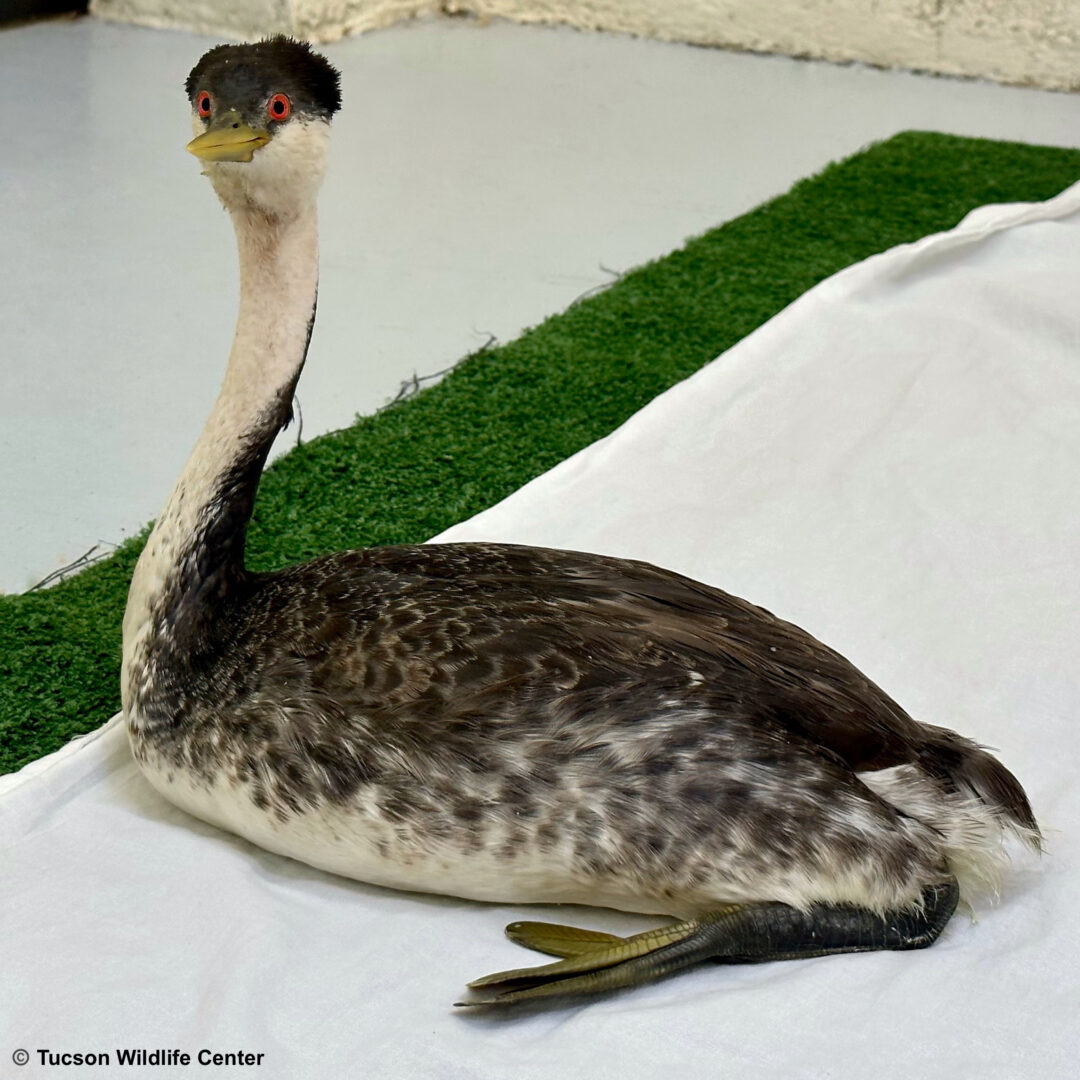
Western Grebe
This Western Grebe recently found himself in a tricky situation, when he most likely mistook the light reflected off a paved road for water. Once he landed on the road, he found it impossible to take off again, as he needed a runway of water to catch air. With legs attached far back on the rear and toes that are lobed instead of webbed, grebes are very efficient swimmers but rarely venture onto land. (Check out our video for a rare glimpse of a grebe’s quirky walk … sound on).
A Green Valley resident noticed the grebe seemed stuck on the road and that he had blood on his neck, so he brought the bird to Tucson Wildlife Center. His intake exam by TWC’s wildlife care team revealed a significant wound under his chin, that they cleaned and treated. Once the wound has healed completely, the grebe will be released on a resource-rich lake with fish, where other grebes frequent.
Fun facts: The Western Grebe is the largest of the North American grebes and its mating display is among the most complicated of all. During the ‘weed dance,’ the male and female both raise their chest gently out of the water and then rub each other with water plants in their long bills. Then comes the ‘rushing’ phase when the birds look at each other before exploding into a sprint across the water’s surface. Each grebe stands high, with its wings held back and its cobra-like head and neck rigid. The race ends with the pair diving head first below the water. (http://naturemappingfoundation.org/natmap/facts/western_grebe_k6.html )
If you would like to help patients like this Western Grebe, click the donate button below.
Another way you can contribute is to visit our “wish list” on Amazon by clicking on the Amazon Wish List button below. We appreciate it, as will all the wild animals in our care!
Below is a short video of the Western Grebe


